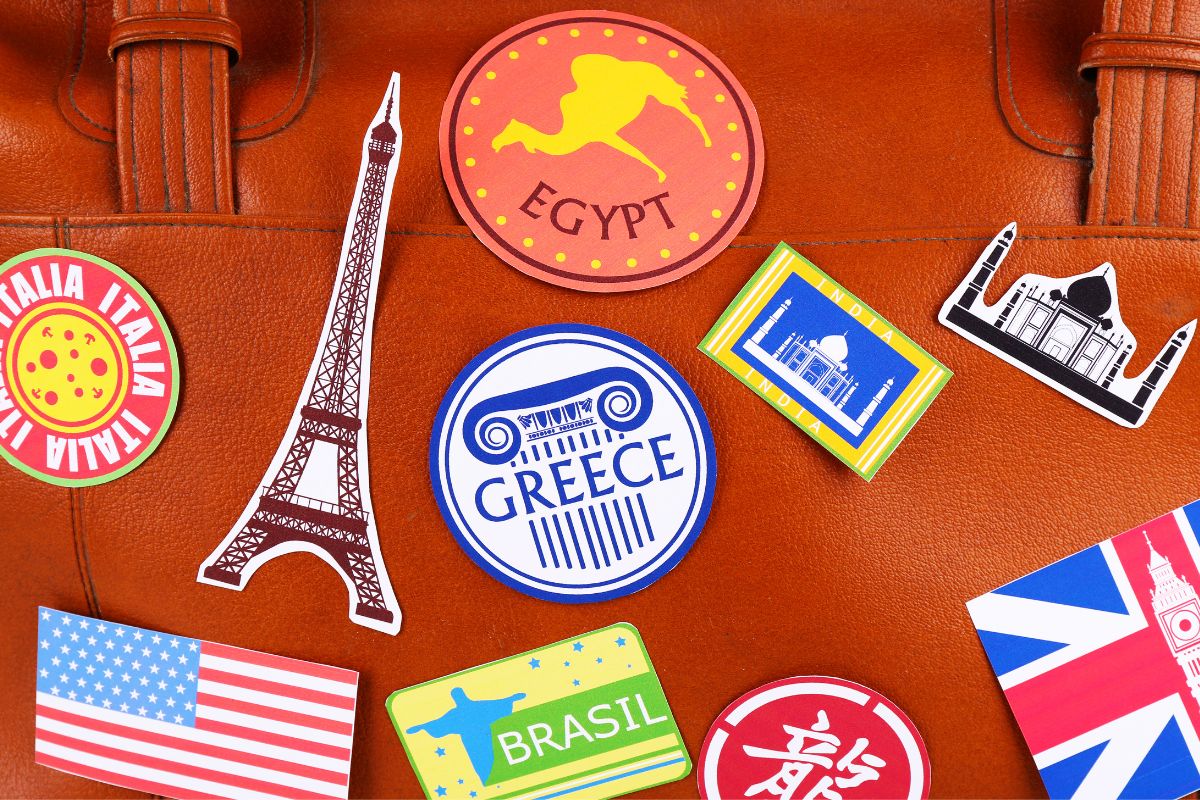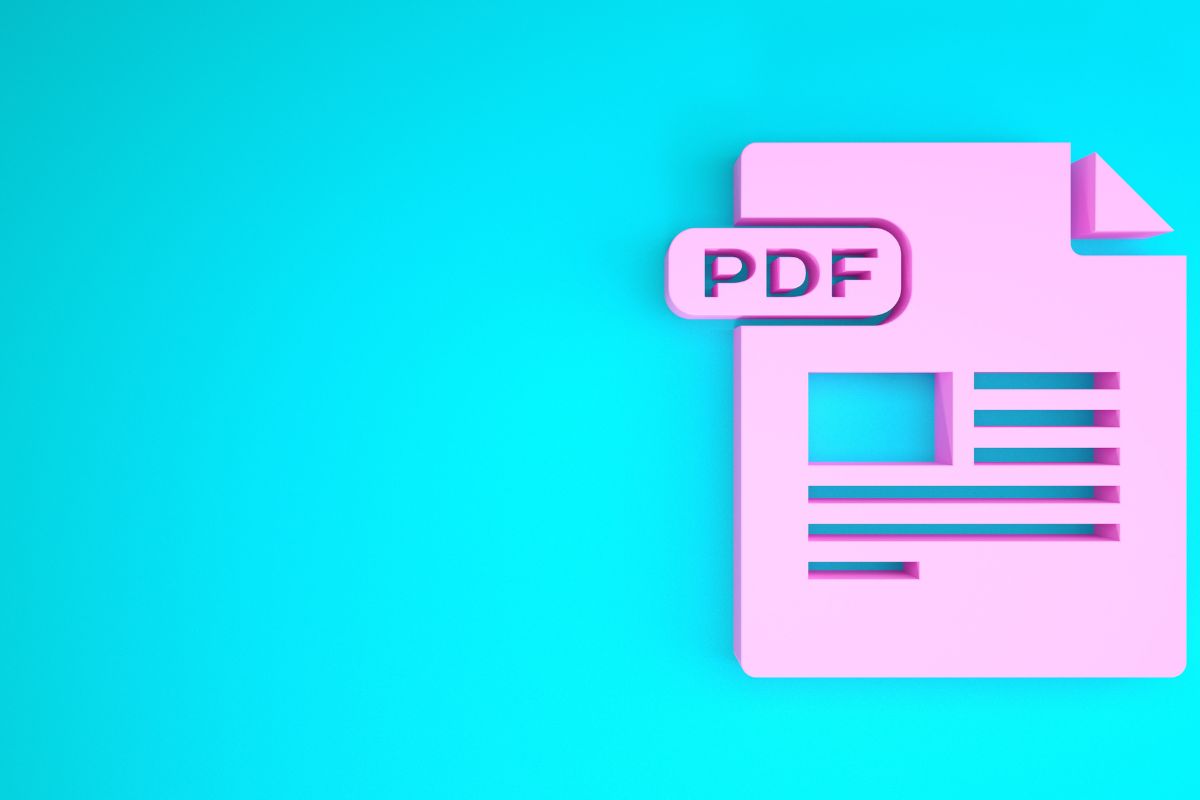To successfully sell stickers, it’s crucial to leverage the right tools and techniques to create designs that are both unique and appealing to your target audience. Effective use of design software and a creative approach will help you to stand out in the competitive sticker market.
Choosing the Right Design Software
Canva: An excellent starting point for newcomers to design, Canva offers a user-friendly interface and a variety of templates that can help you create stickers efficiently. For more advanced features, Canva Pro can be a worthwhile investment.
Adobe Photoshop & Adobe Illustrator: For those seeking professional-grade tools, Adobe Photoshop and Illustrator are the industry standards. Photoshop excels in detailed image manipulation, while Illustrator is ideal for vector-based sticker designs that scale without losing quality.
Procreate: Aimed at artists who prefer working on iPads, Procreate provides an intuitive experience for crafting digital illustrations. It’s particularly useful for creating freehand, artistic sticker designs.
Crafting Unique Sticker Designs
- Brainstorming: Start by brainstorming ideas relevant to your audience. What themes or trends are currently popular?
- Mood Boards: Construct mood boards with existing designs that inspire you, ensuring that your sticker designs remain distinctive and eye-catching.
Remember, your stickers should embody a unique aesthetic that resonates with your brand or message. Whether it’s bold typography, quirky illustrations, or sleek graphics, make your design count.
Utilizing Digital Art Programs
- Tutorials: Make use of online tutorials to master your chosen software. There’s a wealth of knowledge available that can elevate your design skillset.
- Experimentation: Don’t hesitate to experiment with different styles and techniques, especially when using versatile programs like Procreate.
By becoming proficient in digital art programs, you’ll be able to create a range of sticker designs, from basic vinyl stickers to intricate, multi-colored pieces that capture the attention of potential customers.
Selecting Materials and Finishes
When you set out to create stickers for sale, the choice of material and finish directly influences both the appearance and durability of your stickers. Understanding the differences between various sticker papers and vinyl types, as well as the variety of finishes available, will allow you to produce a professional-looking product that meets your customers’ needs.
Types of Sticker Paper and Vinyl
Vinyl Sticker Paper: Vinyl is a popular choice for stickers due to its durability and resistance to the elements, making it ideal for both indoor and outdoor use. There are two main types of vinyl sticker paper:
- Permanent adhesive vinyl sticks aggressively and is suitable for stickers that aren’t meant to be removed.
- Removable adhesive vinyl offers a less intense stick, perfect for decals that may need to be removed or repositioned.
Print Quality: To ensure your stickers look sharp and vibrant, opt for high-quality sticker paper compatible with your printer. Inkjet and laser printers require different types of sticker paper to achieve the best print quality.
- Inkjet sticker paper is specifically coated to absorb ink from inkjet printers.
- Laser sticker paper is designed to withstand the heat of laser printers and may have a different coating.
Adhesive Quality: The adhesive back of the sticker is just as important as the front.
- Strong adhesive ensures your stickers will stick well to various surfaces.
- Weaker adhesive might be preferable for stickers that need to be removed without residue.
Clear Vinyl: Clear vinyl allows for transparent areas within your design and is fantastic for window stickers or designs where you want the background surface to show through.
Different Sticker Finishes
Glossy Finishes: A glossy finish provides a shiny look that enhances colors and makes them pop.
- Glossy paper is great for vibrant stickers that aim to catch the eye.
- Glossy vinyl offers the same shine with enhanced durability.
Matte Finishes: Matte stickers offer a non-reflective finish that gives a more subtle, professional look.
- Matte paper stickers exude a more understated elegance.
- Matte vinyl combines a sophisticated appearance with the longevity of vinyl.
Specialty Finishes: These can set your stickers apart and include:
- Holographic stickers: which display a rainbow-like sheen that changes with light and perspective.
- Prismatic stickers: similar to holographic but with a patterned shift in color.
- Mirrored stickers: have a reflective surface that can mimic the look of a mirror.
Selecting the right material and finish for your stickers is integral to producing a product that stands out and meets the needs of your target market. Each choice should be made with consideration to the intended use, desired aesthetic, and longevity required for your stickers.
Printing and Production
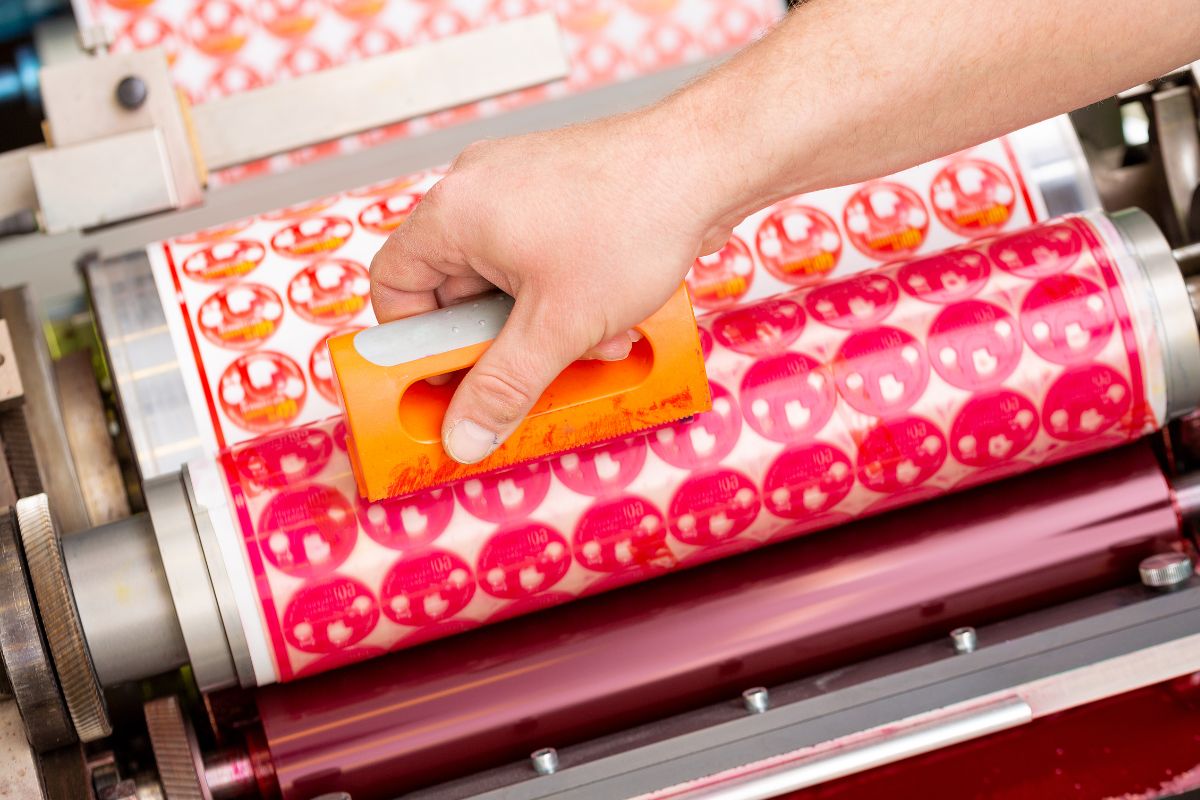
In this section, you’ll learn the essential aspects of sticker production, from deciding whether to print at home or outsource to understanding the cutting techniques that give stickers their final shape.
Home Printing vs. Professional Services
When you decide to make stickers, you can either print them at home or use professional services. Home printing with devices like inkjet or laser printers may save you upfront costs, and using a Cricut machine allows you to cut stickers yourself. However, professional services such as Printful, Redbubble, or Printify offer a print-on-demand model that eliminates the need for inventory and uses industrial-grade printers for higher quality.
Choosing the Right Printing Methods
Selecting the correct printing methods affects the quality and appeal of your stickers. Digital printing is a versatile option for high-detail graphics and can accommodate small orders. It ensures vivid colors and sharp images, making it suitable for intricate designs. When considering printing services, compare their printing technology to ensure they can handle the quality you expect for your stickers.
Understanding Die-Cut and Kiss-Cut Techniques
Two popular cutting techniques for stickers are die-cut and kiss-cut. Die-cut stickers are cut all the way through the backing material to the shape of the sticker, which gives a unique outline and can enhance the design’s visual impact. Kiss-cut stickers instead only cut through the vinyl layer and leave the backing intact, allowing for additional artwork or text around the sticker itself. Both methods require precise settings when cutting at home, especially when using machines like Cricut for intricate designs.
Setting Up an Online Storefront
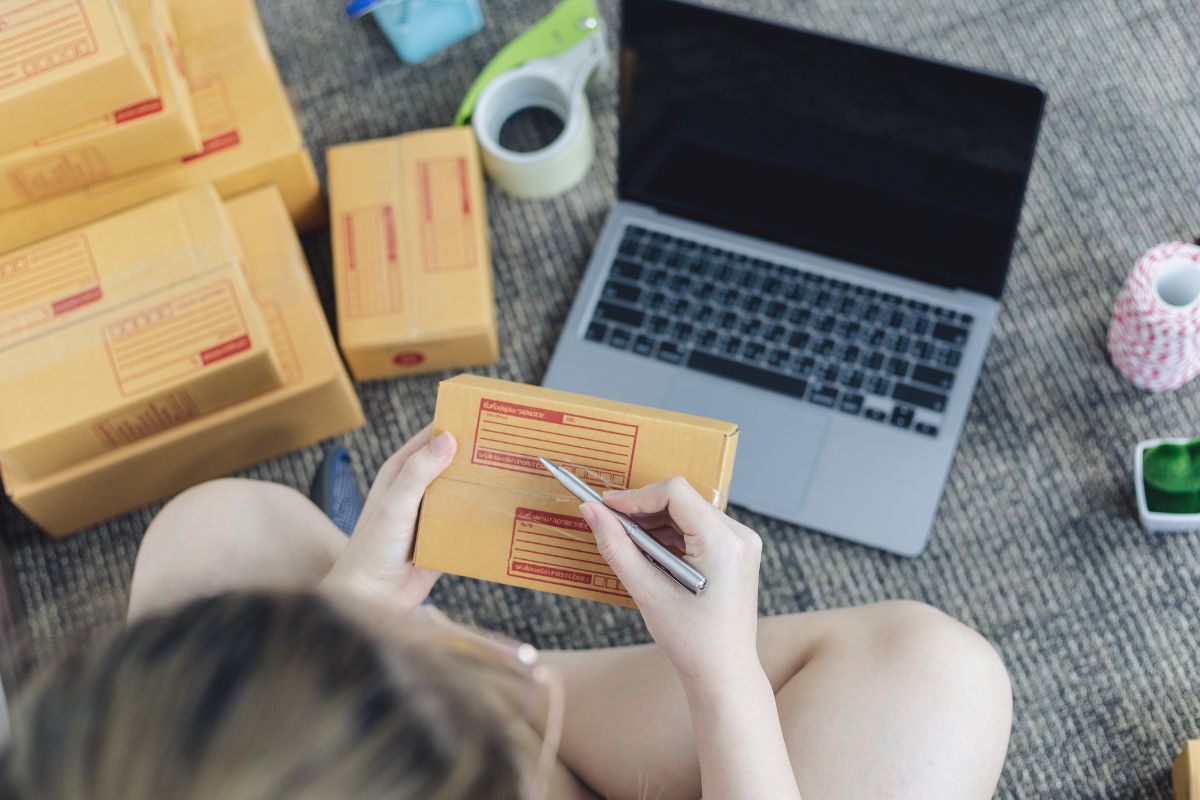
Creating an online storefront is an essential step in your journey as an artist to sell stickers. Your digital shop is the front line of interaction with customers, so it needs to be both inviting and functional.
Building Your Online Presence
Begin by choosing an online marketplace or platform that aligns with your small business goals. Etsy is a popular choice for selling stickers due to its vast audience looking for unique, handcrafted items. Alternatively, consider platforms like Redbubble for a more automated approach with print-on-demand capabilities. It’s crucial to optiCreating stickers for sale is a unique blend of art, design, and marketing. You’ll need to start by determining your sticker’s purpose and target audience, as this will guide the design and messaging. Whether you’re looking to express artistic flair, send a poignant message, or simply make a statement, the design phase is where your creativity comes to life. Use graphic design software that you’re comfortable with to bring your ideas to life, ensuring the visuals are eye-catching and the message resonates with your intended market.
After designing your stickers, the production process begins. You have a choice between various types of sticker materials and adhesives, depending on where and how they’ll be used. Vinyl stickers are popular due to their durability and weather resistance, making them ideal for outdoor use. On the other hand, paper stickers might be sufficient for short-term indoor applications. Once you decide on the material, printing your stickers can either be outsourced to a professional printer or done at home with a high-quality printer and the appropriate sticker paper.
When your stickers are ready, packaging them attractively and protectively is key to making a good impression. Personal touches or branding elements can be added during this stage to enhance the unboxing experience. Identifying where to sell your stickers—be it online through platforms like Etsy, at craft fairs, or local businesses—can greatly influence the success of your sticker business. Strategize a plan to reach your target audience effectively, and you’re set to turn your creative designs into a profitable endeavor.
Understanding the Sticker Market
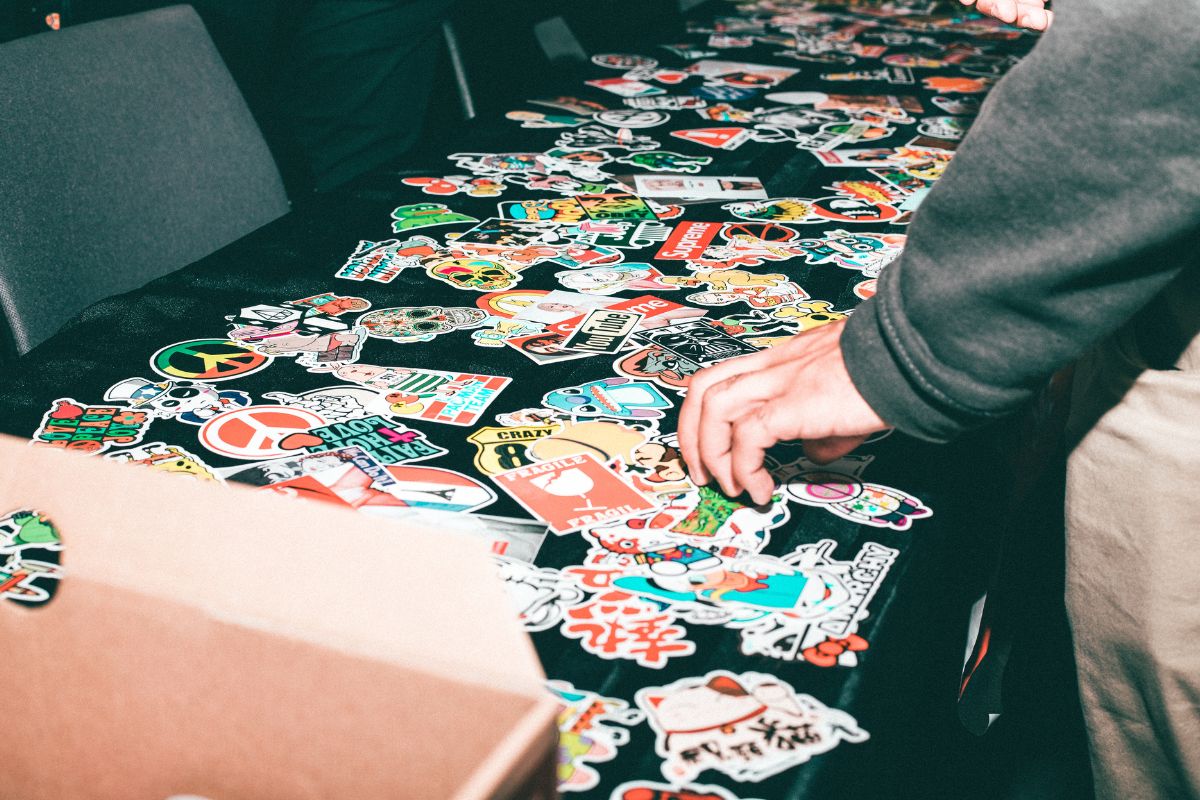
Before diving into the sticker business, grasp the nuances of the market. Here’s how you can strategically place your creations in the competitive marketplace.
Identifying Your Target Audience
To successfully sell stickers online, you must understand who is likely to buy your stickers. Conduct thorough market research to create detailed buyer personas. These should reflect the preferences, needs, and spending habits of potential customers. Is your target audience keen on decorative stickers for planners, or are they looking for unique stickers related to niche fandoms? Establishing this directs your product development and marketing efforts effectively.
Analyzing Market Trends and Demands
Keep a finger on the pulse of the sticker market to identify rising trends. What themes, colors, or events are currently popular and how can you offer something unique and creative? An analysis of online marketplaces can reveal which types of stickers are in demand. This can guide you to curate or create collections that have a higher chance of resonating with consumers looking for the latest and most appealing designs.
Competitor Analysis and Differentiation
Understanding your competition is crucial. Explore other sticker businesses and what they are offering. How are their products similar or different to yours? Could you offer better quality, unique designs, or niche themes that aren’t widely available? Differentiate your sticker line to fill gaps in the market while also catering to the demands of potential buyers identified during your audience and trend analysis. This strategic differentiation will help to position your brand as a go-to for distinct and desirable stickers in a crowded marketplace.
Designing Stickers that Sell
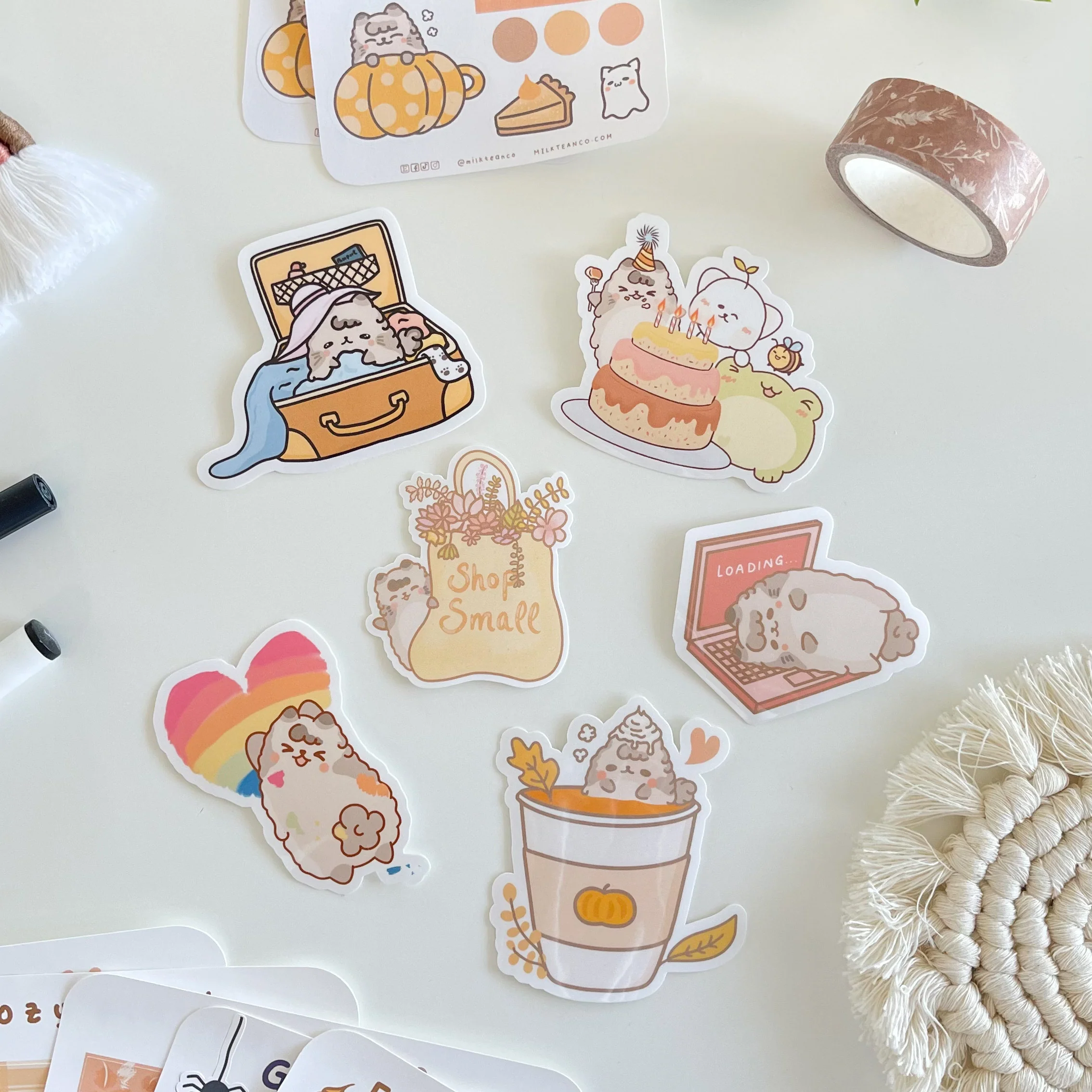
mize your storefront with SEO practices by utilizing tools such as eRank to identify effective keywords that improve visibility and drive traffic.
Optimizing Product Descriptions
Your product descriptions should be clear, compelling, and packed with relevant keywords without compromising readability. Use lists to highlight sticker features like size, material, and usage tips. Don’t shy away from sharing the story behind your designs; this personal touch can distinguish your sticker shop from competitors on online marketplaces.
Creating High-Quality Product Photos
In a visual-centric market, product photos can make or break a sale. Utilize a mockup generator for a cost-effective way to present your stickers in realistic settings. Aim for well-lit and high-resolution images that showcase the vibrant colors and details of your work. Remember, these images are a reflection of your brand’s quality, so ensure they are sharp and professionally displayed.
By focusing on these key aspects, you’ll craft an online storefront that not only highlights your creativity as an artist but also targets the sticker-loving consumer effectively.
Marketing Strategies for Sticker Sales

When looking to sell stickers, it’s crucial to devise a plan that catches the eye of your target market and utilizes the right marketplaces to maximize your visibility.
Harnessing the Power of Social Media
Social Media Presence: To capture your target market, your branding should resonate with your audience across various social media platforms. Use bold visuals and consistent messaging that embodies your brand’s essence, and ensure that your sticker designs reflect trends and themes that appeal to your community.
Influencers and Collaborations: Partner with influencers who align with your brand values and have an audience that would appreciate your art. These collaborations can put your stickers in front of potential buyers who trust the influencer’s recommendations, thus tapping into a loyal customer base.
Paid Advertising: Invest in social media adverts to reach a broader audience. Precise targeting options allow you to display your products to individuals based on their interests, behaviors, and previous interactions with your brand or similar products.
Interactive Content: Create engaging content like polls, quizzes, and contests to encourage interaction. This not only boosts your engagement rates but also offers valuable insights into your customers’ preferences, helping you tailor your products and campaigns accordingly.
Remember, each social platform serves a specific purpose and demographic. Tailor your content and strategy for each one, and track the analytics to understand which efforts bring the best return on investment.
Pricing, Packaging, and Shipping
In the sticker business, your profit margin hinges on optimizing costs. You need to calibrate pricing that reflects value, choose packaging that is both protective and presentable, and streamline your shipping to ensure customer satisfaction without eroding your bottom line.
Determining Competitive Pricing Strategies
Your stickers’ price should balance affordability with sustainable profit margins. Analyze your target market to establish how much customers are willing to pay. Consider creating sticker sheets to provide better value. Monitor competitors to ensure your prices are competitive but don’t undervalue your product. For entrepreneurs and small business owners, utilizing tiered pricing strategies can incentivize bulk purchases while maximizing profits per unit.
Effective Packaging Techniques
First impressions matter. Packaging your stickers isn’t just about protection; it’s part of your brand experience. Opt for packaging that showcases your stickers safely and attractively. Consider using clear poly bags or branded backing cards for your sticker sheets. Use recyclable materials to appeal to eco-conscious consumers. Remember, effective packaging can also be lightweight and slim, reducing packaging and shipping costs.
Streamlining the Shipping Process
Efficiency is key in shipping. If handling logistics in-house isn’t viable, consider dropshipping or fulfillment services that specialize in packaging and shipping merchandise. They can offer discounted shipping rates and handle inventory storage. This leaves you free to focus on design and marketing. Always provide tracking for shipments and choose a reliable shipping service to maintain customer trust in your small business.
Customer Engagement and Feedback
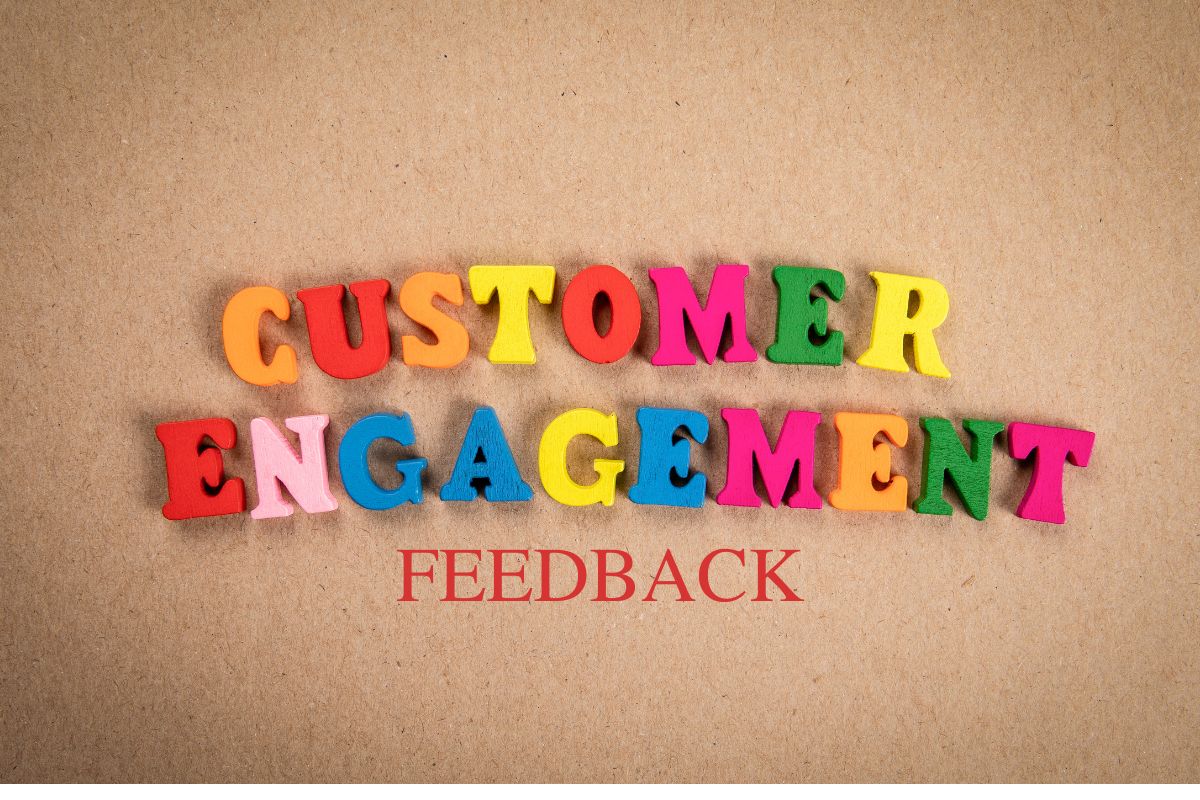
To excel in selling stickers, it’s crucial to understand that customer engagement and feedback are foundational to your success. By fostering a supportive community and diligently addressing customer insights, you’ll not only enhance your sticker business’s reputation but also strengthen brand loyalty.
Building a Community Around Your Brand
Create a space where your customers can share their love for your stickers. Utilize social media platforms to showcase your products and encourage purchasers to post with your stickers, using a specific hashtag linked to your sticker shop. This creates a cycle of engagement, where new customers can see how others are using and enjoying your stickers, thereby growing your community and increasing brand visibility.
Collecting and Acting on Customer Feedback
Feedback is vital. Encourage your customers to leave reviews and testimonials on your website and social media. You can provide incentives for feedback, such as discounts on future purchases. Once collected, categorize the feedback into actionable insights. If several customers mention a certain sticker’s adhesive quality, take that into account for future product improvements. Responding to both positive and negative feedback demonstrates exemplary customer service, showing that you value your customers’ opinions and are committed to evolving your product offerings.
Scaling Your Sticker Business

As an entrepreneur in the sticker business, growth is a critical component of success. To move beyond a start-up, you must adopt strategic growth strategies and consider leveraging innovative business models such as print on demand and dropshipping for market expansion.
Exploring Expansion Opportunities
To scale your sticker business, first examine the current market for areas of potential expansion. This could mean venturing into new geographic areas or tapping into underrepresented niche markets. Consider extending your product line to include complementary items that resonate with your target audience. A well-planned product line extension can often lead to a significant increase in revenue and customer loyalty. For example, if your stickers are favored by a younger demographic, expanding to include related school supplies might be rewarding.
Leveraging Print on Demand and Dropshipping
Print on demand (POD) and dropshipping are low-risk business models especially beneficial for scaling your sticker business. These methods eliminate the need for a large upfront investment in inventory and free up capital for other growth initiatives.
- Advantages of Print on Demand:
- Customization: Easily offer personalized stickers, which can command higher prices.
- Efficiency: Only print stickers as orders come in, keeping your costs aligned with revenue.
- Advantages of Dropshipping:
- Lower Risk: Avoid the overhead of managing inventory and storage.
- Flexibility: Test new designs or niches without significant investment.
By integrating POD and dropshipping into your business, you can fast-track the expansion of your sticker offerings without the logistical headaches traditionally associated with scaling. This strategic move not only increases the potential variety of stickers you can sell but also places your business in a solid position to adapt quickly to changes in consumer trends.
Frequently Asked Questions
Navigating the sticker market can be intricate, but with the right guidance, you’ll understand the steps to create and sell your stickers successfully.
What is the process for creating vinyl stickers that I can sell?
To create vinyl stickers for sale, you’ll need to design your sticker, print it onto vinyl sheeting using a specialized printer, and then cut the design out, usually with a cutting machine such as a Cricut or Silhouette. Finally, coat the stickers with a protective laminate and trim the edges for a polished look.
Can you recommend some effective strategies for selling handmade stickers?
For selling handmade stickers, establish a unique brand style and connect with your audience on social media for promotion. Craft a storefront on platforms like Etsy or Shopify, and consider collaborating with influencers or attending craft fairs to get your products noticed.
What steps are involved in starting my own sticker making business?
Starting your own sticker business involves several key steps: refining your sticker designs, sourcing quality materials, pricing your stickers competitively, setting up an online store, and implementing a marketing strategy. Don’t forget the legal aspects, such as obtaining a business license and managing taxes.
Which platforms are most suitable for selling printable stickers?
Platforms like Etsy, Shopify, and Big Cartel are ideal for selling printable stickers due to their user-friendly interfaces and popularity with craft-oriented shoppers. You can also consider selling through your own website to cut down on marketplace fees.
How can I make stickers without a Cricut machine that are good enough to sell?
You can make sellable stickers without a Cricut machine by printing your designs on adhesive paper and using a steady hand or a standard paper cutter to cut out the designs. Ensure your designs are precise and the cuts are clean for a professional finish.
Is there a profitable market for DIY stickers, and how can I tap into it?
Yes, there’s a profitable market for DIY stickers, especially for unique and niche designs. To tap into this market, focus on trends, create stickers that appeal to specific interests, and utilize social media to reach potential customers, sharing your creative process and finished products.

